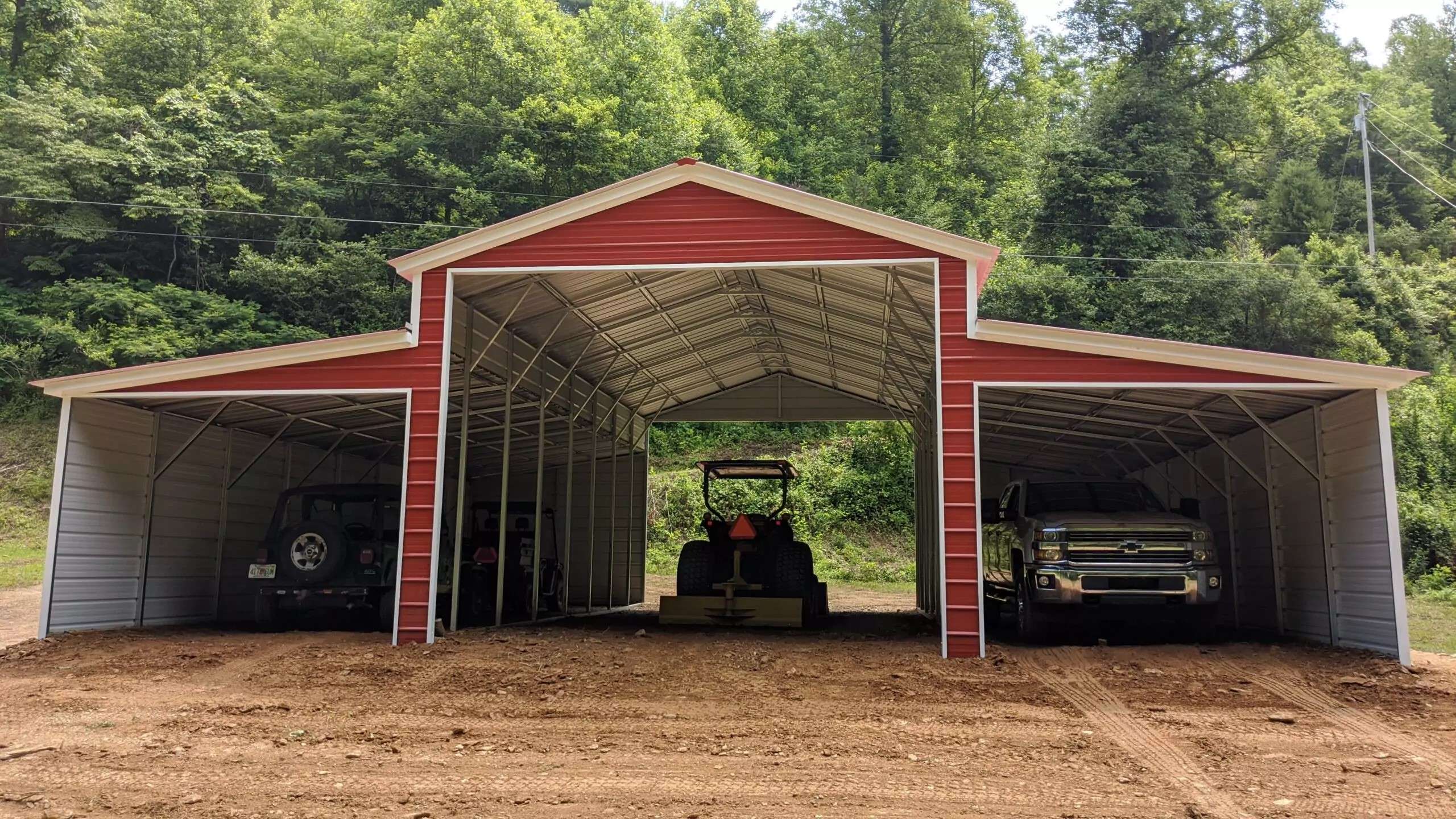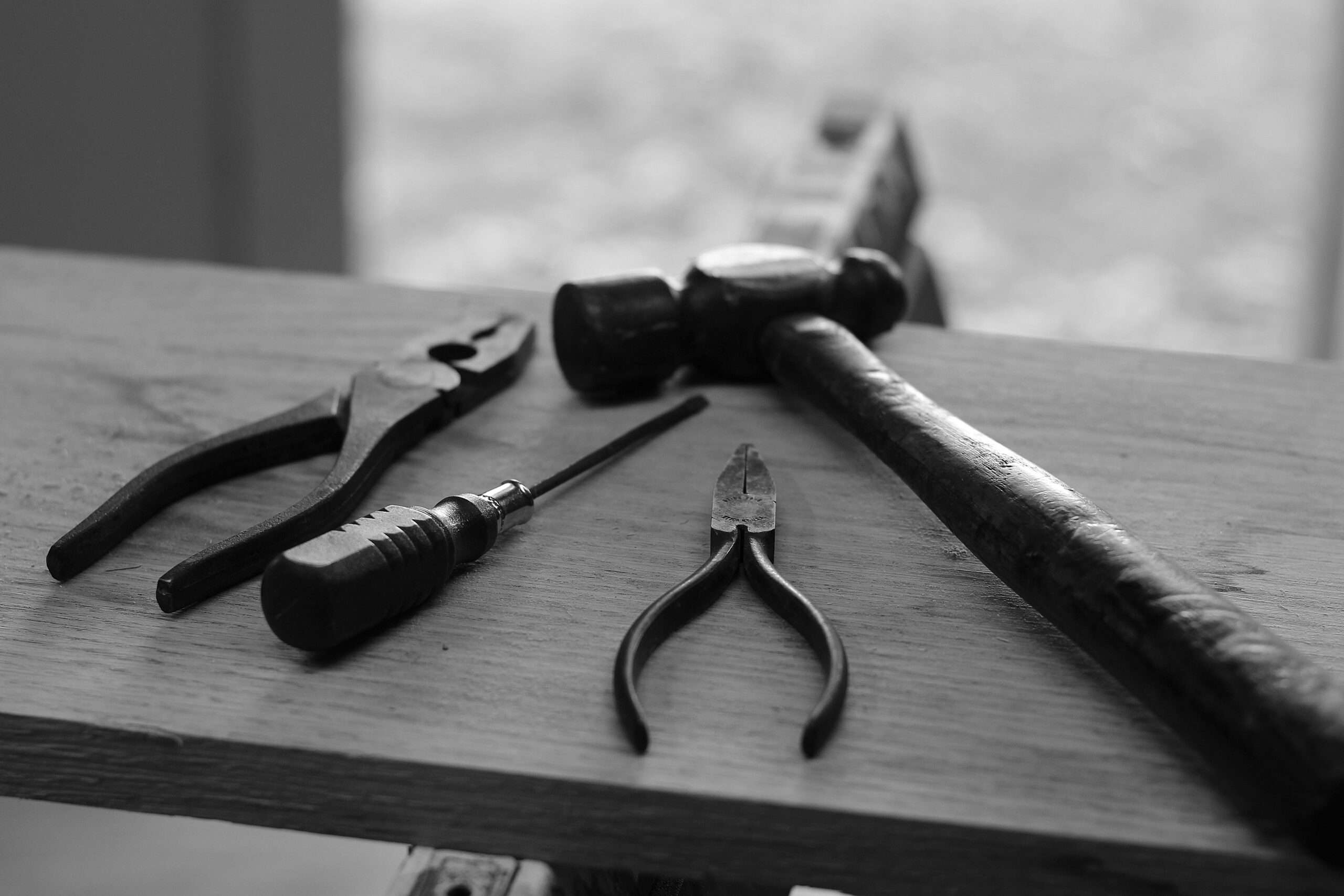Welcome, fellow barn enthusiasts! Whether you’re a seasoned rancher or a weekend homesteader, the question of “metal vs. wood barn” likely lingers in your mind. Both materials offer distinct advantages, and the best choice ultimately depends on your needs and preferences. Today, we’ll delve into the depths of this debate, exploring the strengths and weaknesses of both contenders. By the end, you’ll be equipped to make an informed decision for your dream barn!

Forget the Binary Choice: Finding the Perfect Barn Material for YOU
The age-old question: Metal barn or wood barn? While many blogs frame it as a head-to-head battle, the truth is, there’s no single “winner.” The ideal material for your barn hinges on a unique blend of your priorities, budget, vision, and values. Let’s ditch the binary choice and explore how each material harmonizes with different needs:
Priorities & Budget
- Low-maintenance lifestyle: If minimal upkeep is your mantra, metal shines with its weather resistance and minimal maintenance needs. Consider the long-term savings it offers compared to wood’s ongoing maintenance requirements.
- Budget-conscious builder: Prefabricated metal barns often offer a more cost-effective upfront option, especially if you’re tackling construction yourself. However, factor in potential size limitations and customization constraints.
- Customization king: Wood reigns supreme for those who crave a fully personalized barn. Design your dream space, choose specific wood types, and incorporate unique features that reflect your vision. Be prepared for potentially higher costs and longer construction timelines.
Vision & Functionality
- Modern aesthetic: Metal’s sleek lines and clean finishes perfectly complement contemporary architectural styles. Consider its adaptability to various uses, from workshops to storage facilities.
- Rustic charm: Wood’s timeless beauty and natural warmth seamlessly blend with rural landscapes. Embrace the traditional farmhouse vibe and design a space that evokes a sense of history and comfort.
- Specific needs: Consider the primary function of your barn. Does it require specific temperature control, moisture management, or structural strength? Both materials offer solutions, but their suitability depends on your specific needs and intended use.
Environmental Impact
- Minimize resource consumption: Metal’s high recycling rate and minimal maintenance needs translate to a lower overall resource footprint. However, consider the energy-intensive production process and potential transportation emissions.
- Support sustainable practices: Choose responsibly sourced wood from certified forests to minimize environmental impact and support biodiversity. Be mindful of the chemicals used in treatments and explore eco-friendly alternatives.
Beyond the Binary
Remember, the metal vs. wood debate doesn’t exist in a vacuum. Explore alternative materials like engineered wood products or hybrid structures that combine metal and wood elements. Consider factors like local availability, building codes, and personal preferences that might influence your decision.
Durability & Maintenance – Drilling Deeper
Forget surface-level comparisons! Dive deep into the durability and maintenance secrets of metal and wood barns. Discover their strengths, weaknesses, and long-term implications to build a barn that thrives for years to come.
Metal:
Pros:
- Long-lasting champion: With proper installation and minimal maintenance, a metal barn can stand strong for decades, even exceeding 50 years. Say goodbye to worries about rot, insect infestations, or weather-related degradation that plague wood. Think of it as an ironclad guardian of your belongings and livestock.
- Low-maintenance dream: Forget the annual chore of repainting! Metal barns typically only require occasional washing to remove dirt and debris. And since insects and termites won’t be gnawing away, you can ditch costly inspections and treatments.
- Fire resistance: Depending on the type of metal and construction, certain metal barns offer superior fire resistance compared to wood. This can be a crucial factor for storing flammable equipment or ensuring animal safety.
- Durability against the elements: Rain, snow, wind, and sun – metal shrugs them all off. Its sturdiness can withstand heavy snowfall, strong winds, and even hailstorms without significant damage.
Cons:
- Dent and scratch susceptible: While resilient, metal isn’t invincible. Playful animals or flying debris like hail can leave unsightly dents and scratches. Repairing these may require professional intervention, adding to costs.
- Temperature extremes: Metal excels at conducting heat and cold. This translates to potentially hotter summers and colder winters inside the barn compared to wood. Additional insulation or ventilation might be necessary for animal comfort or sensitive equipment storage.
- Rust can creep in: Though rarer with treated and coated metal, rust can develop over time if exposed to constant moisture or improper maintenance. Early detection and treatment are crucial to prevent further damage.
Wood:
Pros:
- Natural insulator: Wood’s inherent thermal properties provide year-round comfort for animals and stored items. It keeps the barn cooler in summer and warmer in winter, potentially reducing energy needs for heating and cooling.
- Timeless charm: There’s something undeniably attractive about the classic look and feel of a wooden barn. It blends seamlessly with natural landscapes and evokes a sense of rustic charm.
- Versatility reigns: Wood offers unmatched flexibility in design and customization. You can tailor the barn to your specific needs and aesthetics, be it a traditional gambrel roof or a modern post-and-beam structure.
- Renewable resource: When sourced responsibly from managed forests, wood can be a sustainable and eco-friendly choice. Its natural carbon sequestration can even benefit the environment.
Cons:
- Maintenance marathon: Unlike metal, wood requires regular upkeep to maintain its integrity and beauty. This includes periodic painting, sealing, and potential repairs for rot or insect damage. Be prepared to invest time, effort, and potentially money in ongoing maintenance.
- Vulnerable to the elements: Sun, rain, and moisture can cause warping, cracking, and rot if not properly treated and protected. This can lead to costly repairs and even structural issues if left unchecked.
- Insect buffet: Termites and other wood-boring insects find your barn an irresistible feast. Regular inspections and preventative measures are essential to ward off these unwelcome guests.
- Fire hazard: Wood is inherently flammable, posing a greater fire risk compared to metal. This necessitates careful precautions for electrical wiring, heating sources, and storage of flammable materials.
Construction & Cost – Building Your Barn Dream
Metal:
Pros:
- Prefabricated speed: Forget months of construction hassles! Prefabricated metal barns arrive in pre-cut and pre-drilled sections, allowing for swift assembly. Think Lego on a grand scale, just with less frustration. This translates to significant time savings compared to building a wooden barn from scratch.
- Labor cost advantage: Due to their modular design and ease of assembly, prefabricated metal barns often require less labor compared to custom wood barns. This can translate to lower construction costs, especially if you’re tackling the project yourself with some handyman skills.
- Size and style variety: Don’t think “metal barn” and imagine a cookie-cutter shed. Prefabricated options come in diverse sizes and styles, from classic gable roofs to modern A-frame designs. Find one that caters to your functional needs and aesthetic preferences.
- Expandability: Future-proof your barn! Many prefabricated metal structures offer modular expansion options. As your needs evolve, you can add bays or sections seamlessly, ensuring your barn grows with you.
Cons:
- Limited customization: While offering various styles, prefabricated metal barns might not fulfill your deepest design desires. Customizing dimensions, layouts, or adding intricate details may be challenging or require additional costs.
- Upfront price considerations: Compared to locally sourced lumber, the initial cost of prefabricated metal barns can be higher. However, remember to factor in the long-term savings on maintenance and potential labor costs.
- Delivery and installation complexities: Depending on the size and complexity of the prefabricated structure, delivery and installation might require specialized equipment and expertise, adding to the overall cost.
Wood:
Pros:
- Customization king: The sky’s the limit! Build your dream barn exactly as you envisioned it, down to the last detail. Choose specific wood types, intricate designs, and unique features that reflect your individual personality and purpose.
- Locally sourced cost savings: Depending on your location, acquiring lumber locally can be more cost-effective than prefabricated metal options. Explore sustainable forestry practices in your area for environmentally friendly and potentially budget-friendly wood supplies.
- Sense of accomplishment: Building your own wooden barn can be a deeply rewarding experience. You’ll not only have a custom-built structure but also the satisfaction of creating something with your own hands.
Cons:
- Time commitment: Get ready to roll up your sleeves! Building a wooden barn requires significant time, from planning and permits to construction and finishing touches. Be prepared for a potentially months-long journey.
- Expertise needed: Unless you’re a seasoned builder, tackling a wooden barn project solo might be daunting. Hiring skilled carpenters and contractors can add to the cost, especially if specialized work is required.
- Permitting hurdles: Navigating building permits and regulations can be complex and time-consuming. Research local requirements thoroughly and factor in the potential delays and costs associated with obtaining permits.
- Mistake multiplier: With wood, mistakes can be costly. Improper construction or material choices can lead to expensive repairs down the line. Careful planning and execution are crucial for long-term barn health.
Aesthetics & Functionality – More Than Just Looks
Metal:
Pros:
- Modern marvel: Embrace the industrial chic! Metal barns evoke a clean, contemporary aesthetic, with sharp lines and smooth finishes. They perfectly complement modern architectural styles and stand out as bold statements in rural landscapes.
- Versatility unbound: Don’t let the “barn” label limit your imagination. Metal structures adapt seamlessly to various uses, from workshops with wide-open spaces to multi-story storage facilities with modular flexibility. Their strength and adaptability make them suitable for housing livestock, equipment, vehicles, or even creating unique event spaces.
- Color play potential: While traditionally silver or gray, prefabricated metal barns can be painted in various colors to match your style or blend with the surrounding environment. Consider sleek black for a modern statement or earthy green for a more rustic feel.
- Low-maintenance beauty: Forget about weather-beaten wood! Metal requires minimal upkeep to maintain its aesthetic appeal. Occasional washing and touch-up paint, if needed, will keep your barn looking sharp for years to come.
Cons:
- Industrial charm, or not? The modern lines and cool tones of metal might not resonate with everyone. If you envision a warm, traditional farmhouse vibe, wood might be a better fit. Consider your desired aesthetic and ensure the barn complements your overall vision.
- The symphony of storms: Metal amplifies sound! Rain and wind can create noticeable drumming noises, and internal sounds might echo within the barn. Insulation and strategic placement of sound-absorbing materials can help mitigate these concerns.
- Heat transfer considerations: Metal readily conducts heat and cold, potentially leading to uncomfortable temperature extremes inside the barn, especially in climates with significant seasonal variations. Proper ventilation and insulation are crucial for animal comfort and maintaining stable temperatures for sensitive equipment or stored items.
Wood:
Pros:
- Timeless rustic charm: The warmth and natural beauty of wood offer an undeniable appeal. Imagine weathered barn boards or sleek stained finishes seamlessly blending into your rural landscape. Wood evokes a sense of tradition and nostalgia, making it a perfect choice for those seeking a classic farmhouse aesthetic.
- Design freedom unleashed: Let your creativity flow! Wood offers unmatched flexibility in design. Build unique shapes, incorporate intricate details, and add custom touches that reflect your individuality. Whether you dream of a gambrel roof, a charming cupola, or an expansive porch, wood allows you to bring your vision to life.
- Blending with nature: Wood naturally integrates with its surroundings. Choose locally sourced lumber that complements the colors and textures of your landscape, creating a harmonious connection between your barn and the environment. This seamless integration enhances the overall aesthetic appeal and reinforces the barn’s presence within its natural setting.
- Adaptability with limitations: While versatile, wood’s susceptibility to moisture and temperature changes requires careful consideration for specific uses. For example, storing sensitive equipment or housing certain livestock might require additional measures to control humidity and maintain optimal temperatures.
Cons:
- Modern limitations: Compared to metal’s sleek lines, wood might appear less modern or contemporary. If you favor a minimalist aesthetic, metal might be a better choice. However, explore modern wood treatments and design elements that can achieve a more streamlined look while retaining the inherent beauty of wood.
- Functional considerations: Remember, wood requires ongoing maintenance to maintain its functionality. Ensure your design and chosen wood type suit the intended purpose of the barn. For example, storing heavy equipment might necessitate thicker beams and reinforced structures, while housing animals might require specific features for ventilation and temperature control.
- Weather’s toll: As a natural material, wood is susceptible to moisture damage, warping, and cracking if not properly treated and protected. Factor in ongoing maintenance costs for painting, sealing, and potential repairs to ensure your barn’s long-term functionality and aesthetic appeal.
Environmental Impact – Building with the Planet in Mind
Choosing between metal and wood for your barn extends beyond aesthetics and functionality. The environmental impact of your choice deserves careful consideration in today’s eco-conscious world. Let’s delve deeper into the sustainability factors of each material:
Metal:
Pros:
- Recycling champion: Steel boasts an impressive 98% recycling rate, making it a truly sustainable material. Once your barn reaches the end of its lifespan, the steel can be repurposed into new structures, minimizing waste and conserving natural resources.
- Energy-efficient cooling: Metal naturally reflects sunlight, reducing heat absorption and the need for extensive cooling systems. This translates to lower energy consumption for air conditioning, especially in warmer climates.
- Minimal ongoing impact: Unlike wood, metal requires minimal maintenance and doesn’t necessitate ongoing treatments with potentially harmful chemicals. This reduces the ongoing environmental footprint associated with maintaining your barn.
Cons:
- Energy-intensive production: While recycled steel is great, the initial production process for new steel is energy-intensive, requiring high temperatures and specialized equipment. This generates greenhouse gas emissions, contributing to climate change.
- Coating concerns: Depending on the type of metal and its intended use, various coatings and treatments might be involved. Unfortunately, some of these coatings can contain harmful chemicals or require toxic solvents during application, posing potential environmental and health risks.
- Transportation logistics: Prefabricated metal barns often travel long distances from manufacturing facilities to their final location. This transportation generates additional emissions, impacting the overall environmental footprint of the material.
Wood:
Pros:
- Renewable resource: When sourced from responsibly managed forests, wood is a renewable resource. Sustainable forestry practices ensure tree replanting and ecosystem health, promoting biodiversity and long-term resource availability.
- Carbon sequestration: Trees act as natural carbon sinks, absorbing and storing carbon dioxide from the atmosphere. By choosing sustainably sourced wood, you contribute to carbon sequestration and mitigate climate change.
- Biodegradable end: At the end of its lifespan, untreated wood biodegrades naturally, returning its nutrients to the soil and minimizing long-term waste concerns.
Cons:
- Unsustainable practices: Unfortunately, not all wood is created equal. Clear-cutting and unsustainable forestry practices can have devastating consequences for ecosystems, biodiversity, and soil health. Carefully research the source of your wood to ensure it comes from responsible forestry practices.
- Treatment trade-offs: While wood boasts natural beauty, it requires protection from moisture, insects, and fire. Some wood treatments contain harmful chemicals that can pollute the environment and pose health risks during application and disposal. Explore eco-friendly treatment options like natural oils or water-based solutions.
- Maintenance burden: Compared to metal, wood demands ongoing maintenance like painting, sealing, and potential repairs. This translates to more resources consumed and potentially harmful chemicals used over the lifespan of the barn.
Conclusion
The journey to your dream barn doesn’t end with simply choosing metal or wood. It’s about forging a harmonious blend between your needs, desires, and the environment. Remember, there’s no single “winner” in this battle. Instead, consider this a symphony where each material plays a distinct melody.
Listen to the rhythm of your priorities: Do you seek low-maintenance ease or the freedom of customization? Is budget a primary concern, or are you willing to invest in long-term savings through minimal upkeep? Let your values guide your decision.
Harmonize with your vision: Imagine your dream barn. Does it echo with the modern clean lines of metal, or resonate with the timeless warmth of wood? Consider the aesthetic you desire and how it complements your surroundings.
Compose a sustainable score: Don’t forget the environment! Explore the responsible sourcing and minimal impact options for both materials. Choose the path that aligns with your environmental values and contributes to a healthier planet.
Beyond the binary: Remember, the possibilities extend beyond just metal and wood. Explore innovative options like engineered wood products or hybrid structures that combine both materials. Local resources and building codes might also influence your choice.
Ultimately, the perfect barn is a reflection of you. Take your time, research thoroughly, and consult with experts. Build a space that sings your values, complements your lifestyle, and harmonizes with the environment. Let your dream barn be a testament to your passion, a legacy for generations to come.
Happy Building!







